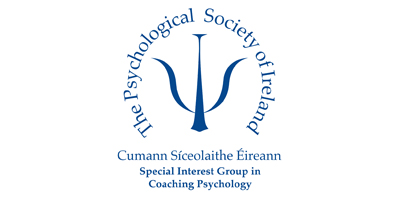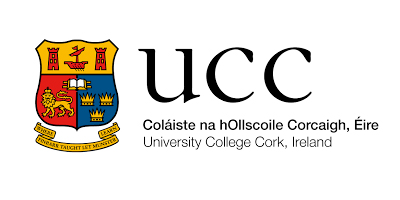What exactly is wellbeing anyway?
Another word for wellbeing might be happiness. However, positive psychology scholars determined that happiness – one of the positive emotions – was not enough when it came to lead what might be called ‘the good life. The ‘good life’ was not to be confused with just being in a cheerful mood. So, the term ‘wellbeing’ was chosen to describe the multiple elements of life which lead to happiness.
Wellbeing is not just about mental and physical health – although these do play an important role in how ‘happy’ we feel.
Wellbeing has both subjective (how we experience the world and feel) and performance components (e.g. our sense of purpose, mastery and functioning optimally). It’s not just about feeling good. It’s also being able to contribute, act effectively in the world, and realize one’s potential – all in relation to something we think is important.
Wellbeing is important not just for its own sake – but also because it is linked to other important outcomes such as our health and performance in work.
The elements of wellbeing
A great model of wellbeing, and the one I use in my practice, is the PERMA-H model by Martin Seligman. The PERMA-H model sees Wellbeing of consisting of 6 interrelated ‘pillars.
These are:
1) Positive Emotion
• This refers to the levels of positive emotion or feelings such as joy, gratitude and optimism
• These can be very useful in combatting negative emotions. When we experience positive emotions, it offsets the negative effects of negative emotions. However, you will need a ratio of at least 3 positive emotions to every 1 negative emotion in order to balance out.
• Positive Emotion is also linked heavily with better performance. If we feel better, we generally perform better.
2) Engagement with your strengths
• This element refers to using what you’re good at to achieve your goals.
• When we utilise our strengths (rather than focus on improving our weaknesses) we feel energised and motivated as we do what comes naturally to us.
• Personally, I like to use a personality assessment, preferably one which utilizes the BIG 5 personality traits as an indicator of strengths. Although Seligman has other measures of strengths (free on his website – see link below).
3) Positive Relationships
• This is the level of connection and positive interaction with others. In the words of Christopher Peterson “Other People Matter” (see link below)
• I like the great Carl Rogers’ definition of a positive relationship – someone who helps you grow.
• Our beliefs, emotional reactions, and behaviours around others, in turn help determine other’s beliefs, reactions and behaviours towards us. This is turn can influence us to feel connected and thus happier.
• One way of improving our relationships is by improving skills associated with Emotional Intelligence. Increasing empathy and the ability to properly listen helps us to understand others better. I like to use the EIQ emotional intelligence assessment
4) Meaning
• Meaning refers to belonging to and serving something greater than yourself. Do you have a purpose? A reason for being? This element of wellbeing refers to the ‘why’ question?
• Our purpose is often linked to our values. Our values are simply what’s important to us on a deep level. These in turn define our goals.
• A sense of purpose is important as it gives us a reason to get going, and keep going, when things are tough, and the rewards aren’t always in sight.
• Purpose is often linked to those we have the closest relationships to such as our partner, children or other family. It is also often linked to other institutions such as religion, politics, community groups, friends we often do what we do for them.
5) Achievement (Accomplishment)
• Achievement involves reaching goals. It can be rewarding for its own sake. For example, progressing in a video game has no effect on the outside world – but can feel like you have accomplished something.
• However, Achievement often involves moving towards your purpose or something that has meaning for you.
• A sense of achievement is one of the main sources of Positive Emotion. It is most likely if you utilize your strengths. One of the areas in our lives where we find the most meaning is in the fostering and strengthening of positive relationships.
6) Health
• Your health and vitality are a cornerstone of your wellbeing. Without these the other elements can be very difficult (but not impossible) to improve or work on.
Interrelated
The 6 pillars of wellbeing are interlinked in a reciprocal way. Each pillar re-enforces the other – for example consider positive emotion in relation to the other elements.
Positive emotion & Health.
• Positive emotions counterbalance the detrimental effect of negative emotions on health. Stress has been linked to cardiovascular disease and autoimmune conditions. Positive emotion has been found to negate the negative effect of stress.
Positive emotion & Achievement/Meaning
• One of the main sources of positive emotion is when we make progress towards a goal. More so, when this goal is important to us – i.e. in line with our purpose.
• We are also more creative and resourceful when we are in a positive emotion state. Stress and negative emotions cause us to narrow our focus to solve problems and remove the stressor. Unfortunately, this can leave us unable to think outside the box or see unobvious answers. (Check out Barbara Fredrickson’s ‘Broaden and Build model of positive emotion’ which details how this happens – links below to an article and book)
Positive Emotion and Engagement with our Strengths.
• Another great source of positive emotion is when we use what we are naturally good at to achieve our goals.
Positive emotion and positive relationships.
• “Very little that is positive is solitary” -Martin Seligman, Flourish
• Love, confidence, and connection are all emotions that rely on the presence of others. I’ll also bet that the last time you felt joy, or laughed, or felt proud, it involved other people.
• Positive emotions also help us to forge better relationships. We are more fun and easier to be around when we exhibit positive emotions. How much more charming, resourceful and likeable are we when we are in a good mood?
So as the example of Positive emotion shows – Wellbeing is intrinsically linked to our performance and productivity. Not only does performing well in service of our purpose and goals make us feel good – feeling good helps with our performance, making us better interpersonally, better problem solvers, motivating us and benefiting our health.
Resources
A great introductory book on Positive Psychology and Wellbeing is Martin Seligman’s ‘Flourish’.
Another great positive Psychology Author is Barbara Fredrickson. She has completed a lot of research on the performance benefits of positive emotion in her Broaden and Build theory of positive emotion
- Article https://www.ncbi.nlm.nih.gov/pmc/articles/PMC3122271/
- Book : https://www.amazon.com/Positivity-Top-Notch-Research-Reveals-Upward/dp/0307393747
Another great in the positive psychology literature, especially in relation to positive relationships and character strengths is Christopher Peterson
I also really like this great, genuinely funny (which is rare) and insightful explanation of how wellbeing, positive psychology and performance are linked by Shawn Achor. Worth watching for the entertainment alone – but the content is great too!.






